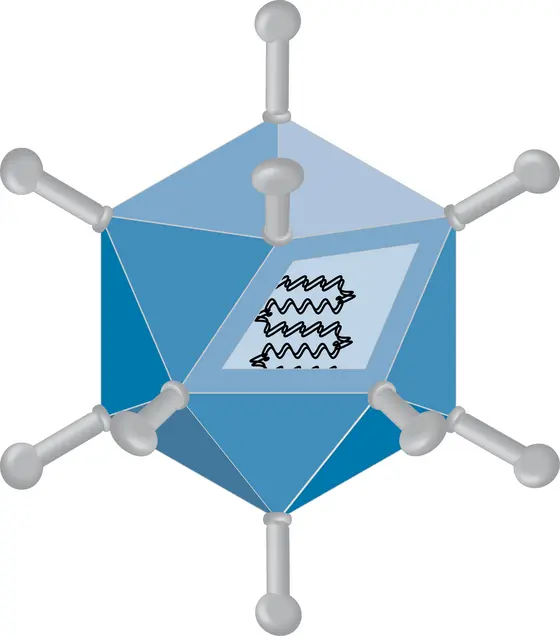In over 100 clinical trials around the globe, researchers are investigating the use of various viruses to fight cancer. Scientists at the German Cancer Research Center (DKFZ), for example, are studying the use of parvoviruses against brain cancer. In work at other sites, researchers are also testing adenoviruses against brain cancer and the measles virus to fight ovarian cancer.
Before approval is given to treat a patient with a therapeutic virus, scientists have to perform meticulous tests to show that the virus cannot cause disease symptoms in the patient or, even worse, escape control. “The viruses that are now being used have proven to be extremely safe," says Associate Professor (PD) Dr. Dirk Nettelbeck, a virologist at the DKFZ. “Nevertheless, safety continues to be a challenge, because of the continual further development of therapeutic viruses, or because they have to be administered at higher dosages to increase their efficiency. Therefore, an ideal solution would be to simply use a drug to switch off the viruses when adverse side effects occur."
However, effective are only available for only a few viruses, so often this is not possible. Researchers around the globe are therefore searching for alternative methods to keep therapeutic viruses in check if necessary. Nettelbeck’s team focused their attention on specific riboswitches called aptazymes. To construct this type of switch, researchers integrate synthetic DNA segments into the regulatory regions of viral genes that are relevant for the spread of the virus. Infected cells transcribe the synthetic construct along with the gene into a single messenger RNA molecule (mRNA). The riboswitch is activated through a substance which attaches itself to the RNA molecule in a precise fit, prompting it to cut itself into pieces. This also inactivates the gene and thus stops the virus from spreading any further.
“First of all, we wanted to demonstrate the principle that riboswitches can be utilized to control therapeutic viruses," says Dr. Patrick Ketzer, first author of the publication. Using two different viruses, the DKFZ virologists studied an RNA switch that responds to the substance theophylline. Both viruses are considered promising candidates for cancer virotherapy, but differ in their biological properties: adenoviruses, whose genetic material is DNA, and the measles viruses, which draw on RNA as their genetic material.
In the adenoviruses, the researchers placed the riboswitch next to the gene that controls the replication of viral DNA in the cell. Thus, the infection could no longer spread from one cell to the next after the substance had been administered. In the culture dish, cancer cells such as melanoma or glioblastoma cells that were infected with the virus produced hardly any new viruses after the additio of theophylline, thus interrupting the infection cycle.
In the measles virus, the DKFZ virologists turned off a gene coding for the so-called fusion protein, which initially enables viruses to enter a cell. Here, too, theophylline slowed the spread of the virus. This is the first time world-wide that researchers have shown that both types of viruses – using DNA or RNA as genetic material – can be controlled using an aptazyme.
“The RNA switch has worked in two completely different viruses, which leads us to think that this approach will also work in controlling other oncolytic viruses," says Ketzer, referring to other viruses that have proven effective as cancer killers but in individual cases can cause disease symptoms in the patient. “The method has great potential, but it is still in its infancy," says Dirk Nettelbeck. “We expect that soon there will be aptazymes available that respond to a wider range of drugs and can be used to completely interrupt viral replication."
Patrick Ketzer, Johanna K. Kaufmanna, Sarah Engelhardt, Sascha Bossow, Christof von Kalle, Jörg S. Hartig, Guy Ungerechts and Dirk M. Nettelbeck: Artificial riboswitches for gene expression and replication control of DNA and RNA viruses. Proceedings of the National Academy of Sciences 2014, DOI: 10.1073/pnas.1318563111
A picture for this press release is available at:
Adenovirus.jpg
Source: Patrick Ketzer, DKFZ
Caption: Schematic representation of an adenovirus
